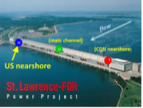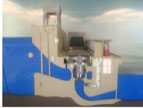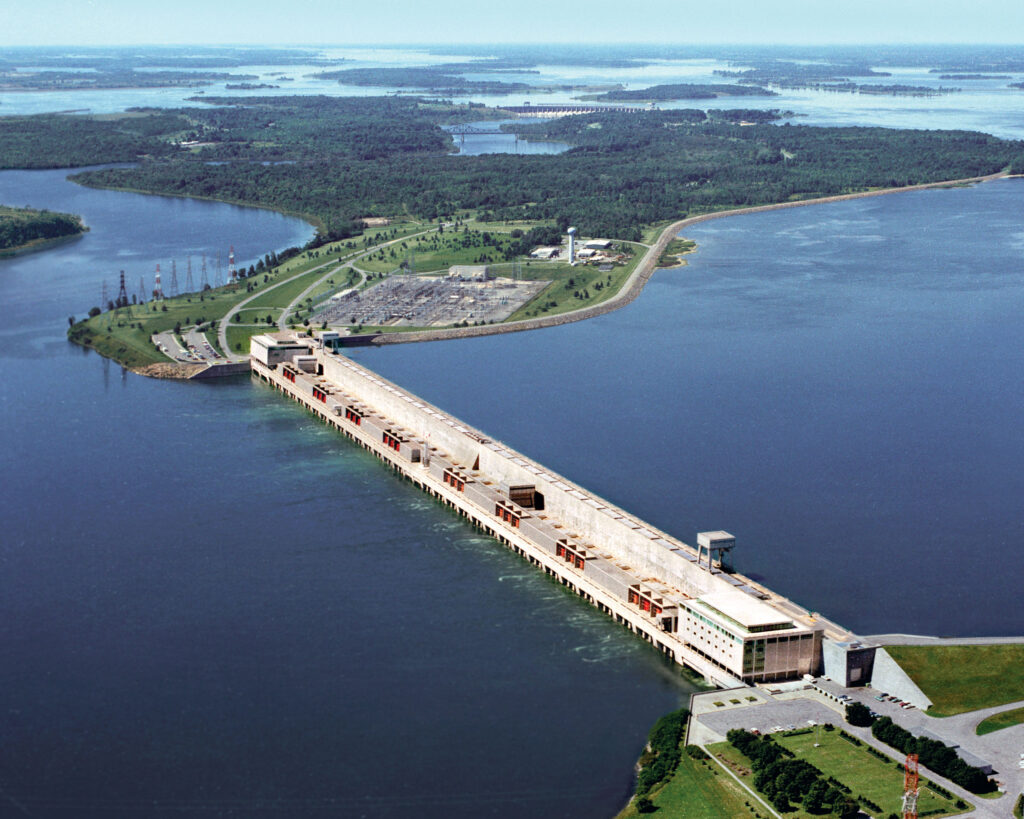Principal investigator:
Michael R. Twiss, PhD
Department of Biology, Clarkson University
8 Clarkson Avenue, Potsdam, New York, 13699-5805
Telephone: (315) 268-2359
E-mail: [email protected]
Co-principal investigators:
DESCRIPTION OF PROJECT: A regional water problem is the paucity of data to support policy decisions on water quality in the International Section of the St. Lawrence River. One cost-effective method to alleviate this information gap is to use remote continuous observation water quality sensor arrays. A novel application that we have developed is the installation of sensor arrays in a hydropower dam wherein sensors are operational year-round, are protected, safe access to available, and in conjunction with hydrodynamic modeling one can predict the region of water upstream that is being detected. Such a sensor array has been operational on the Moses-Saunders hydropower dam in a position that detects nearshore (NY) water quality since June 2014, a sensor array on the nearshore (ON) was installed in April 2017, and the main channel of the St. Lawrence River came under observation in July 2017. Our goal is for this project to become an important and sustained node of the growing smart infrastructure in the Great Lakes region, a goal consistent with the Great Lakes Water Quality Agreement “to develop programs, practices and technology necessary for a better understanding of the Great Lakes Basin Ecosystem”.
Located inside the power dam, the sensors draw water flowing through stator cooling water that is drawn from the penstock prior to passing through the scroll case down to the turbine. Location of the sensors enables discrete water masses to be observed (Fig. 1); previous vessel-supported observations show that the St. Lawrence has a cross channel stratification of water quality and sensors are capable of detecting this. Water passes unfiltered through sensors (Table 1) located in waterproof housing and data are collected at high resolution. At 2-3 week intervals, the instruments are cleaned and re-calibrated; voucher water samples are collected to provide additional water quality observations after processing in a laboratory (Table 2).



Acknowledgments: This project is possible through partial funding provided by the Beacon Institute for Rivers and Estuaries (Clarkson University), the Ontario Ministry of the Environmental and Climate Change, New York Sea Grant, the New York State Water Resources Institute (USGS), and the Great Lakes Research Consortium, and our partners at the New York Power Authority and Ontario Power Generation.
Joseph D. Skufca, PhD
Dept. of Mathematics, Clarkson University
8 Clarkson Avenue, Potsdam, New York, 13699-5805
Telephone: (315) 268-4038
E-mail: [email protected]
Jeffrey J. Ridal, PhD
St. Lawrence River Institute for Env. Sciences,
2 St. Lawrence Drive, Cornwall, ON K6H 4Z1
Telephone: (613) 636-6620
E-mail: [email protected]
Figure 1. (left) Hydrodynamic modeling of water flow that passes through sensor arrays locations on the Moses-Saunders power dam (black bar). (center) Location of sensor arrays in dam turbine units 32, 17, and 1. (right) Cross section of power dam showing location of sensor array (X).



Table 1. Present array set up for high resolution water quality observations made at the Moses-Saunders hydropower dam.
| Sensor | Location | Instruments | Water Quality Parameters |
|---|---|---|---|
| Unit 32 | New York nearshore |
|
|
| Unit 17 | Main Channel |
|
|
| Unit 1 | Ontario nearshore |
|
|
Table 2. Present array set up for high resolution water quality observations made at the Moses-Saunders hydropower dam.
| Parameter | Description |
|---|---|
| Nutrients and solutes |
|
| Contaminants |
|
| Phytoplankton |
|

